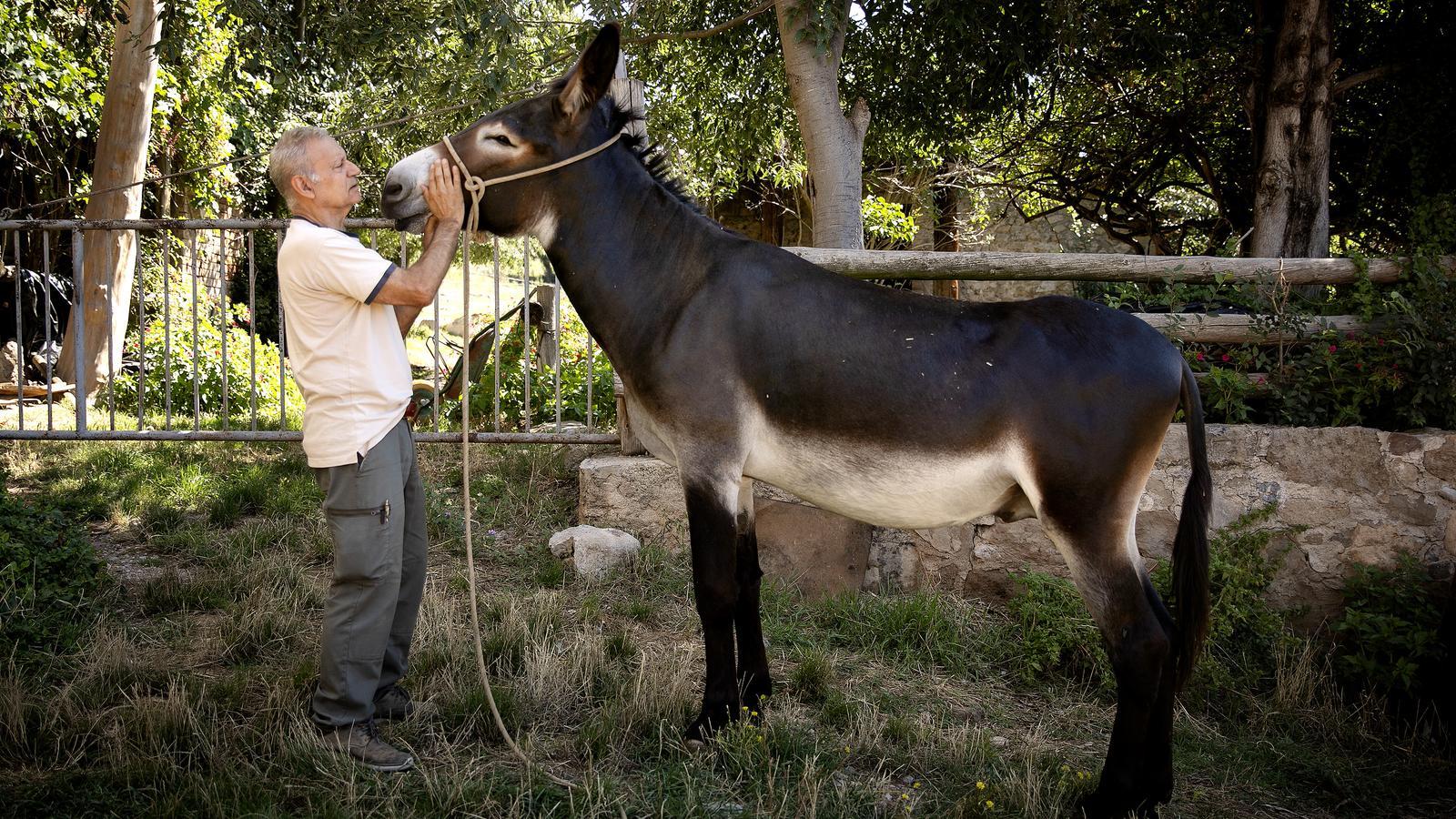"It's a shame that we let an animal that has done so much for Catalonia go to waste."
Joan Gassó, president of the Association for the Promotion of the Catalan Donkey Breed, on the difficult task of protecting the Catalan donkey: "There are only four of us romantics left."


Barcelona"It's no longer in danger of extinction. I'd even go further: it's at an all-time low." Joan Gassó is president of the Association for the Promotion of the Catalan Donkey Breed (AFRAC) and has spent his entire life dedicated to the country's most emblematic animal: the Catalan donkey. Now, however, he laments the institutional neglect they experience and says that those who care for them "do what they can" while no one pays attention to them. The result? There are fewer and fewer of them. In fact, AFRAC claims to have 348 registered, although they acknowledge that there may be some more that are not controlled by the association. "Only four of us romantics are holding out," he asserts.
The causes that have gradually cornered the existence of Catalan donkeys have been multiple. But one of the main ones is that they are not a productive animal, which makes them a poor ally in economic terms. Thus, unlike other farm animals, the Catalan donkey breed "does not offer high performance." For example, a donkey is only capable of producing one liter of milk per day, while a cow can produce up to thirty per day. However, according to Gassó, there is no comparison: "Donkey milk is much richer than that of any other animal."
Reproducing the species isn't easy either. Females have a "very long" reproductive cycle, explains the president of AFRAC. Specifically, they take up to twelve months to give birth and only leave one or two offspring. This low birth rate further complicates population recovery. The recent drastic increase in feed prices has also significantly increased maintenance costs. "In the end, it seems like everything is going against us," he laments.
Another obstacle Gassó identifies is bureaucracy and the lack of institutional support. The farmer, who a few years ago tried to launch a project producing soaps and cosmetics using donkey milk, saw how once he had everything in place, the authorities demanded that he use an automatic milking machine to market it: "It didn't make any sense: a donkey isn't like a cow; it doesn't produce enough milk." Furthermore, although public aid exists, it is "very limited" and "insufficient": "If we continue like this, we won't be able to preserve the breed."
Without generational relevance
Faced with this accumulation of setbacks, Gassó laments the critical moment for the species: "It's a shame that we're letting a breed that has done so much for Catalonia go to waste." "We care a lot about breeds from around the world, but we don't care about those here. It's shameful." Along these lines, the breeder, who has around fifty Catalan donkeys, reflects on how it's possible that there is indifference to this situation while we worry about exotic species from the other side of the world: "We protect whales, dolphins, and eagles, but no one cares about the Catalan donkey."
In the coming years, the Catalan donkeys, with their docile and noble nature, will have to overcome a new obstacle. All the "romantics" they've been caring for for years are getting older, and, as AFRAC confirms, there's no generational change. "If young people don't come, all our efforts will have been in vain," says Gassó. To make the species more attractive, for now, they have been assigned tasks that could make them more economically sustainable, such as clearing the understory to reduce the risk of forest fires.
